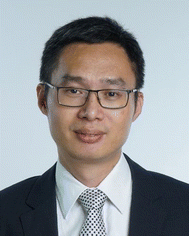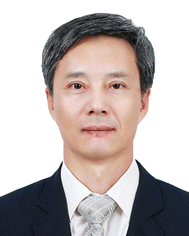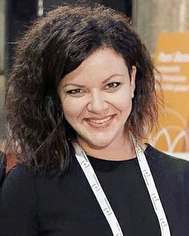Introduction to memristors and neuromorphic systems
Xiaodong
Chen
a,
Cheol Seong
Hwang
b,
Yoeri
van de Burgt
c and
Francesca
Santoro
def
aInnovative Centre for Flexible Devices (iFLEX), Max Planck–NTU Joint Lab for Artificial Senses, School of Materials Science and Engineering, Nanyang Technological University, Singapore 639798, Singapore. E-mail: chenxd@ntu.edu.sg
bDepartment of Materials Science and Engineering and Inter-university Semiconductor Research Center, College of Engineering, Seoul National University, Seoul, 08826, Republic of Korea. E-mail: cheolsh@snu.ac.kr
cMicrosystems and Institure for Complex Molecular Systems, Eindhoven University of Technology, Eindhoven, The Netherlands. E-mail: Y.B.v.d.Burgt@tue.nl
dCenter for Advanced Biomaterials for Healthcare, Istituto Italiano di Tecnologia, Largo Barsanti e Matteucci 53, Naples 80125, Italy
eInstitute of Biological Information Processing – Bioelectronics, IBI-3, Forschungszentrum Jülich, Jülich, 52428, Germany. E-mail: f.santoro@fz-juelich.de
fNeuroelectronic Interfaces, RWTH Aachen, Aachen, 52074, Germany
Abstract
Recent generative artificial intelligence (AI) has exerted a profound and far-reaching global impact across diverse fields and society. However, it comes at the cost of substantial energy and computational resource consumption. Neuromorphic computing endeavors to create highly efficient computing hardware that emulates biological neural networks and even mimics some human brain functions, and it is expected to play an essential role in the next-generation computing hardware. Memristors open up novel opportunities for neuromorphic computing due to their feasible ability to mimic neural functions. Innovation in memristors may lead to novel algorithms and contribute to conventionally challenging tasks like nondeterministic polynomial time (NP)-hard problem. To this end, we present a themed collection in Materials Horizons and Nanoscale Horizons, in which we publish the latest developments in memristive materials, device fabrication, characterization, and circuit design for neuromorphic systems.
The current AI models have made remarkable strides in diverse fields like computer vision and natural language processing, while running on a digital von Neumann computer, although this architecture is proven more and more to be inefficient. Due to the increasing computing demand for big-data applications, traditional von Neumann architectures face the significant challenge of continuous data transfer between separate processors and memory units, which invokes high energy consumption issues. Over long evolution, the human brain has become a highly efficient intelligent platform featured by complex neural architecture and advanced cognitive functions. Inspired by the brain, neuromorphic computing aims to realize efficient computing resources by mimicking biological neural networks.1 Memristors, discovered as the fourth basic circuit element in 1971,2 have garnered significant attention and enthusiasm within the context of neuromorphic devices that emulate synaptic and neuronal functions.3 Memristors exhibit significant potential for the hardware implementation of highly efficient artificial neural networks4,5 and biomimetic robotics.6
This themed collection includes outstanding contributions in memristors and neuromorphic systems, highlighting the latest memristor development in memristive materials, device fabrication, and circuit design for future neuromorphic and in-memory computing systems. Memristive materials are the foundation for high-performance memristor-based neural networks. Solanki’s group reported a solution-processed lead-iodide-based flexible memristive device (https://doi.org/10.1039/d3nh00505d). The device demonstrates unique features like low operation voltage (<1.0 V), high stability (2 × 104 cycles of potentiation and depression), and synaptic characteristics (short and long-term plasticity and spike time-dependent plasticity) on a flexible substrate. The flexible platform demonstrates exceptional performance, achieving 95.1% simulated recognition accuracy of the handwritten dataset. This work offers profound insights into low-cost device fabrication techniques, which will be essential in the practical application of memristors. Casiraghi’s group developed a fully printed memristor device, where MoS2 is printed as a resistive switching material, while graphene and silver are printed as top and bottom electrodes, respectively (https://doi.org/10.1039/d3mh01224g). The device fabricated on Kapton film exhibits resistance switching ratios of 102–103 and remains stable at least up to 2% of strain. The work shows that inkjet printing is a feasible and flexible memristor fabrication technology. Hardware implementation of efficient neural networks based on memristors is an important step towards the practical use of memristors. Hwang’s group reported a reservoir computing neural network based on heterogeneous Ta2O5/HfO2 memristors (https://doi.org/10.1039/d3nh00493g). The heterogeneous reservoir states are acquired by combining different features of memristor units. This combination improves the pattern recognition performance even with a smaller physical network size because the heterogeneous reservoir provides an extensive and diverse set of feature extractors. The proposed approach enhances the capacity of image recognition and time series prediction in ultra-low power edge computing devices.
These are just a few examples of the many exciting papers in this themed collection published by Materials Horizons and Nanoscale Horizons on memristors and neuromorphic systems. We hope that all readers find them an exciting read.
Finally, we would like to thank all contributing authors and reviewers of this themed collection, as well as the Editorial staff at the Royal Society of Chemistry, whose assistance was invaluable in achieving the goal of this themed collection.
References
- C. Mead, Nat. Electron., 2020, 3, 434–435 CrossRef.
- L. O. Chua, IEEE Trans. Circuit Theory, 1971, CT-18, 507–519 Search PubMed.
- M. K. Song, J. H. Kang, X. Zhang, W. Ji, A. Ascoli, I. Messaris, A. S. Demirkol, B. Dong, S. Aggarwal, W. Wan, S. M. Hong, S. G. Cardwell, I. Boybat, J. S. Seo, J. S. Lee, M. Lanza, H. Yeon, M. Onen, J. Li, B. Yildiz, J. A. Del Alamo, S. Kim, S. Choi, G. Milano, C. Ricciardi, L. Alff, Y. Chai, Z. Wang, H. Bhaskaran, M. C. Hersam, D. Strukov, H. P. Wong, I. Valov, B. Gao, H. Wu, R. Tetzlaff, A. Sebastian, W. Lu, L. Chua, J. J. Yang and J. Kim, ACS Nano, 2023, 17, 11994–12039 CrossRef CAS PubMed.
- F. Aguirre, A. Sebastian, M. Le Gallo, W. Song, T. Wang, J. J. Yang, W. Lu, M. F. Chang, D. Ielmini, Y. Yang, A. Mehonic, A. Kenyon, M. A. Villena, J. B. Roldan, Y. Wu, H. H. Hsu, N. Raghavan, J. Sune, E. Miranda, A. Eltawil, G. Setti, K. Smagulova, K. N. Salama, O. Krestinskaya, X. Yan, K. W. Ang, S. Jain, S. Li, O. Alharbi, S. Pazos and M. Lanza, Nat. Commun., 2024, 15, 1974 CrossRef CAS PubMed.
- B. Sun, Y. Chen, G. Zhou, Z. Cao, C. Yang, J. Du, X. Chen and J. Shao, ACS Nano, 2024, 18, 14–27 CrossRef CAS PubMed.
- K. He, Y. Liu, J. Yu, X. Guo, M. Wang, L. Zhang, C. Wan, T. Wang, C. Zhou and X. Chen, ACS Nano, 2022, 16, 9691–9700 CrossRef CAS PubMed.
| This journal is © The Royal Society of Chemistry 2024 |




